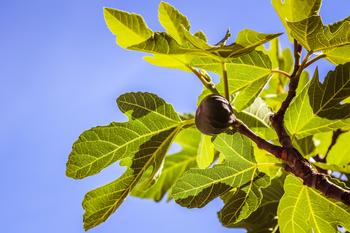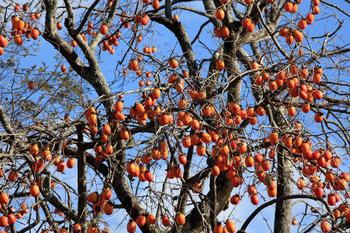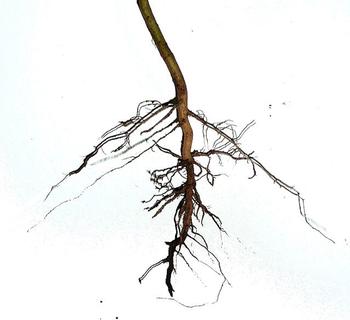
Now's the time to find a variety of bare-root fruit trees like figs at local nurseries. Photo: Jametlene Reskp/Unsplash
Spending your winter dreaming up the perfect summer garden? Dream no more! Now’s the ideal time to plant bare-root perennials. Bare-root plants are harvested from their growing beds in the fall and bundled in sawdust to prevent root dry-out through the dormant season. Local nurseries carry bare-root roses and an impressive range of fruit tree varieties. These plants are generally cheaper, light, and easy to transport. They also have the advantage of growing their new roots in native soil without the difficult, sometimes risky transition from the container. With all these advantages, bare-root plants have only one tricky stipulation: they should be planted almost immediately upon purchase. If you’re considering adding a bare-root tree or shrub to your property (and you should!), avoid working in less-than-ideal conditions and consider digging your hole ahead of time.
Why bare root, and how to select your plant

Persimmon trees require few chill hours and tolerate wet soil as well as dry conditions. Photo: Juuyoh Tanaka
Plants with exposed roots are more adaptable to new soil conditions and tend to have a larger root system than container trees. Placing roots in direct contact with local soil allows the plant to build a robust root system before expending energy on leaf and flower production. Because bare-root plants can be harvested and stored more easily than potted plants and tend to weigh much less, nurseries pass their savings on to you. But the best part of bare-root planting is the selection: nurseries carry a number of exciting varieties during the dormant season, including self-fertile fruit trees perfect for Marin conditions like the White Nectarine Snow Queen and the Fuyu Persimmon.
If you haven’t worked with bare-root plants before, there are a few things to look for in selecting a healthy one. First, check to make sure you don’t see or smell any mold on your plant or its packaging. Next, confirm that the majority of your plant’s branches are intact and that, by and large, the plant hasn’t sustained serious damage in transit. The plant’s roots and rhizomes should not feel light or dried out. Even without soil, the base should have some heft to it. Look for bare-root tree trunks roughly the width of your thumb. And, if you only have space to plant a single tree, be sure to select a self-fertile variety.
Planting and caring for your bare-root plant

Bare-root plants are sold unpotted during the dormant season, are less expensive, and easier to introduce to your property. Photo: Wikimedia Common
Bare-root plants should be planted soon after purchase. If you need to take a few days before getting your plant in the ground, keep the roots covered with moist sawdust until you are ready to plant. Because these plants are dormant, they can handle freezing temperatures. Just be careful to introduce your plant to its permanent location before it has a chance to sprout new growth. When you’re ready to plant, prune out any damaged roots, take care not to cut any healthy roots, and soak the roots in tepid water for a few hours (up to a day).
Your planting hole should be as deep as your plant’s roots and at least twice as wide. Use a shovel or spade to loosen the soil around the sides, especially if you have heavy clay soil in the planting area. If necessary, amend the removed soil with up to 20% garden compost. But use caution: bare-root plants tend to do better in the long run when allowed to adjust to native soil conditions. With loose soil centered in the hole, carefully spread your plant’s roots so that the crown (where the roots and trunk meet) is level with or slightly above the surface. If a tree graft is visible, keep it at least an inch above the planting line while you gently work in native soil around the roots. You can gently use your hands to eliminate air pockets, but take care not to pack in the soil too tightly. Give your plant a healthy watering, checking to make sure the soil around the roots is moist. Apply high-grade mulch, tapering toward the base of the plant at a depth of 2 inches, but hold off on fertilizing. Continue to water regularly (once a week during the dry season) until your plant is established.
Take a chance on a bare-root plant, and reap the fruits of your labor for years to come!
 Now's the time to find a variety of bare-root fruit trees like figs at local nurseries. Photo: Jametlene Reskp/Unsplash
Now's the time to find a variety of bare-root fruit trees like figs at local nurseries. Photo: Jametlene Reskp/Unsplash Persimmon trees require few chill hours and tolerate wet soil as well as dry conditions. Photo: Juuyoh Tanaka
Persimmon trees require few chill hours and tolerate wet soil as well as dry conditions. Photo: Juuyoh Tanaka Bare-root plants are sold unpotted during the dormant season, are less expensive, and easier to introduce to your property. Photo: Wikimedia Common
Bare-root plants are sold unpotted during the dormant season, are less expensive, and easier to introduce to your property. Photo: Wikimedia Common


